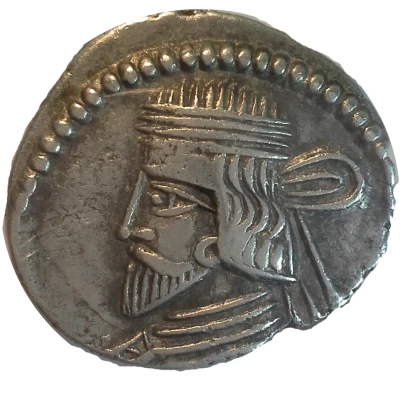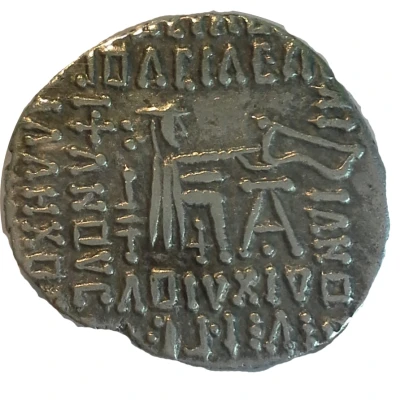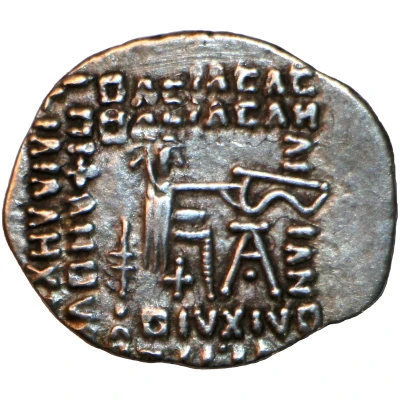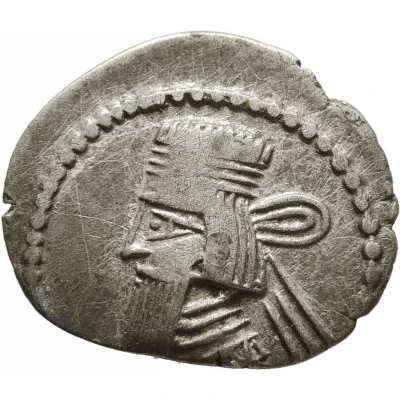
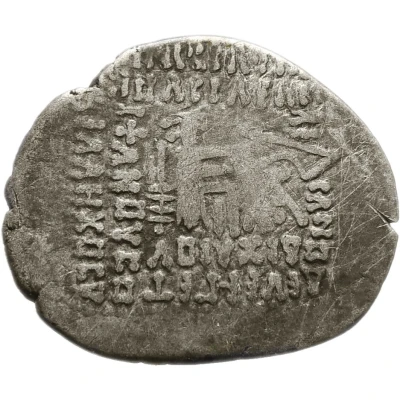

Drachm - Gotarzes II Ecbatana
| Silver | 3.48 g | 23 mm |
| Issuer | Parthian Empire (Parthian Empire (247 BC - 224 AD)) |
|---|---|
| King | Gotarzes II (40-51) |
| Type | Standard circulation coin |
| Years | 40-51 |
| Value | Drachm (1) |
| Currency | Drachm (247 BC-224 AD) |
| Composition | Silver |
| Weight | 3.48 g |
| Diameter | 23 mm |
| Thickness | 1.9 mm |
| Shape | Round (irregular) |
| Technique | Hammered |
| Orientation | Medal alignment ↑↑ |
| Demonetized | Yes |
| Updated | 2024-10-10 |
| Numista | N#157101 |
|---|---|
| Rarity index | 87% |
Reverse
Beardless archer, seated right on throne; in right hand, bow; Greek inscription ΒΑΣΙΛΕΩΣ ΒΑΣΙΛΕΩΝ / ΑΡΣΑΚΟ[Υ] / ΕΥΕΡΓΕΤΟ[Υ] ΔΙΚΑΙΟΥ / [Ε]ΠΙΦΑΝΟΥΣ€ [ΦΙ]ΛΕΛΛΗ[ΝΟΣ], legend on left read from outside; mint monogram below bow.
Script: Greek
Lettering: ΒΑΣΙΛΕΩΣ ΒΑΣΙΛΕΩΝ / ΑΡΣΑΚΟ[Υ] / ΕΥΕΡΓΕΤΟ[Υ] ΔΙΚΑΙΟΥ / [Ε]ΠΙΦΑΝΟΥΣ€ [ΦΙ]ΛΕΛΛΗ[ΝΟΣ]
Interesting fact
The Parthian Empire, which issued the Drachm - Gotarzes II (Ecbatana) coin, was known for its extensive trade networks and influential cultural exchange programs. As a result, the coinage of the Parthian Empire often featured a blend of traditional Persian and Greek elements, reflecting the empire's diverse cultural heritage. The obverse of this particular coin, for example, features a portrait of Gotarzes II with a distinctly Greek-style beard and hair, while the reverse depicts a stylized representation of the Persian goddess Anahita. This fusion of cultural influences is a testament to the Parthian Empire's unique position as a crossroads of civilizations.
